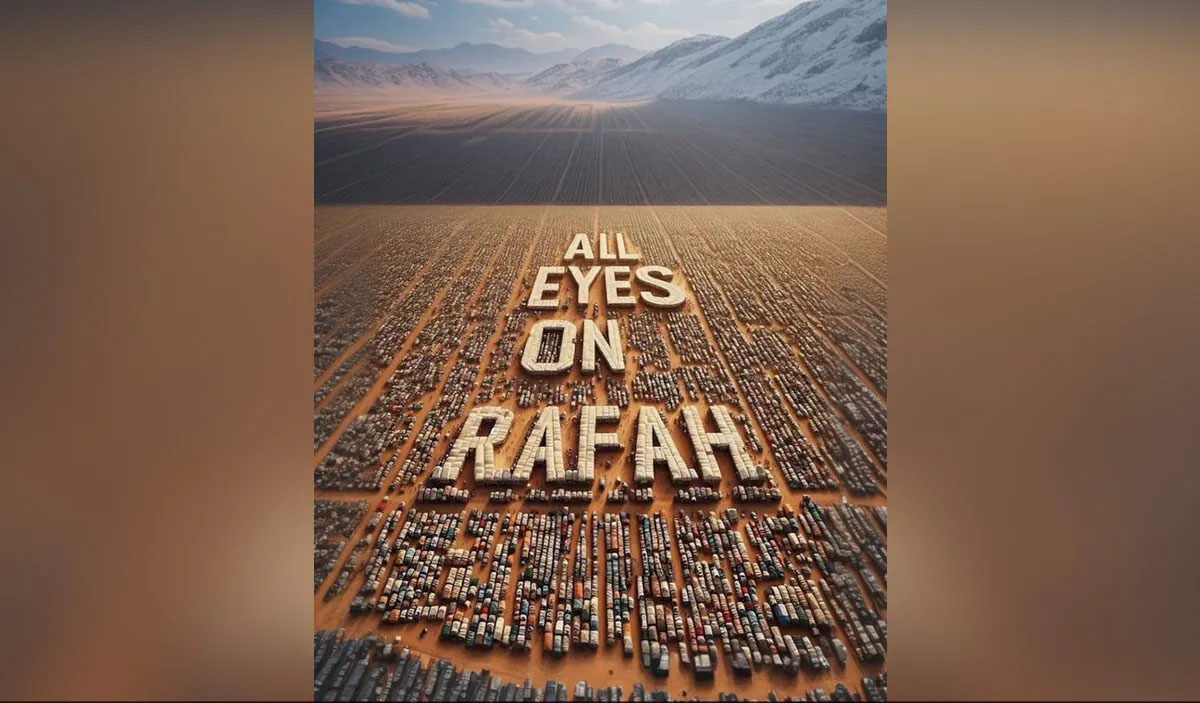
Photo Credit:Insideworld
In a world where the power of social media is undeniable, a single image can spark a global movement. This is the case with the “All Eyes on Rafah” campaign, which has taken the internet by storm, amassing over 47 million shares on Instagram. The AI- generated image, depicting orderly tent camps with the slogan prominently displayed, has become a symbol of solidarity and awareness for the plight of displaced Palestinians in Rafah following a devastating Israeli air strike.
The origin of the slogan traces back to a statement by Richard Peeperkorn, a representative of the World Health Organization, who in February warned of the dire consequences should Israeli forces attack the city. His words, “All eyes are on Rafah,” have since been echoed by officials and activists alike, encapsulating the world’s vigilance over the military operations in Rafah that began three weeks ago.
The virality of the Image is attributed to several factors. Its AI-generated nature means it lacks graphic content that could lead to its removal from platforms like Instagram, thus enabling widespread sharing. The simplicity of the slogan and the ease with which Instagram users can share the post have also contributed to its rapid dissemination. Moreover, the endorsement by celebrities such as Dua Lipa, Lewis Hamilton, and Gigi and Bella Hadid has significantly amplified its reach.
The timing and political context of the post have played a crucial role in its virality. The image emerged at a time when many feel outraged at the news of the strike on the camp in Rafah, leading to a strong emotional response and engagement from the public. Anastasia Kavada, who runs an MA course on media, campaigning, and social change at the University of Westminster, emphasizes that the political context of the post is the most important factor in its virality.
Instagram’s ‘Add Yours’ feature has also been instrumental in the campaign’s spread. This feature allows users to easily re-share the photo and add their own captions and tags, making them easy to customize and share. Maher Nammari, an e-marketing and artificial intelligence consultant, notes that the use of such a feature in political or social campaigns is a recent development.
While the image has been praised for raising awareness, it has also faced criticism for not showing the true extent of the devastation on the ground. Dr. Paul Reilly, a senior lecturer in Communications, Media, and Democracy at the University of Glasgow, points out that some activists are concerned that the image sanitizes the reality of the situation.
Despite the criticisms, the “All Eyes on Rafah” campaign stands as a testament to the power of AI-generated imagery in social activism. It highlights the potential for digital tools to create impactful messages that resonate with a global audience, sparking conversations and driving social change. As the situation in Rafah continues to unfold, the world watches, and the call for attention remains as relevant as ever. “All Eyes on Rafah” is not just a slogan; it’s a reminder of the collective gaze of millions, fixed on a city under siege, and the hope for a peaceful resolution.

















